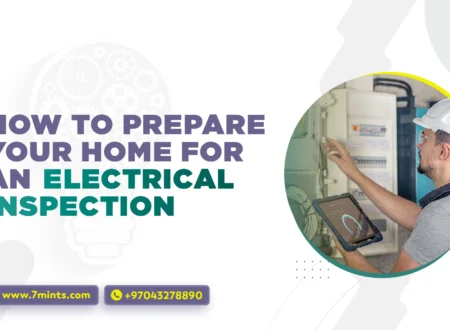Electrical wiring constitutes the main framework of modern houses. It is expected that all the appliances, lights, and other devices must receive power in a safe and efficient manner. A major point to consider when choosing wiring is the safety factor, ease of maintenance, and possible future upgrades. In this blog, we discussed the basic types of electrical wiring systems in plain English, including wench points, features, advantages, and best applications.
Conduit Wiring System: Strong Protection for Wires
Conduit wiring protects wires by enclosing them in a tube commonly called a conduit. This method is favored in new constructions as well as renovations where the utmost importance is granted to safety and durability.
Important Features of Conduit Wiring
Types of Conduits
Conduits can be of two main types: Metallic and Nonmetallic. Metallic conduits provide the highest degree of mechanical protection and are very highly resistant to fire. Nonmetallic conduits, such as PVC, are inexpensive, lightweight, resistant to corrosion, and very easy to install. The use of metallic or non-metallic conduits depends upon the type of building construction, environment, and cost considerations.
Enhanced Safety
By encasing wires in strong tubes, conduit wiring systems offer great protection against accidental damage, penetration by moisture, or even rodent attacks, thereby reducing the likelihood of electrical fires. This, in turn, renders these systems suitable for installation in kitchen areas, bathrooms, and outdoor spaces. Thus, the safety ensures the good condition of the wiring for years, which minimizes the chance of short circuits or electrical hazards.
Flexibility for Upgrades
The conduit system makes it easy to add new wires or replace old ones in the future. Because the wires run inside the conduits, you can pull new cables through the existing tubes without having to break the walls or ceilings. This becomes especially useful if you plan to upgrade the electric system someday with fixtures like new lights, outlets, or smart-home elements.
Cleat Wiring System: Simple and Temporary
The oldest and simplest wiring method one can call is cleat wiring. It uses porcelain or plastic cleats to fix wires along walls or ceilings. Although this method has become quite obsolete in modern-day residential wiring, it still finds applications in temporary installations and in areas that are fairly remote.
Key Features of Cleat Wiring
Low Cost
Hence, it is competent enough to meet short-term needs or situations where circumstantial economics is a very important factor. However, the drawback of low cost comes at the expense of safety and longevity; hence, experts do not recommend it for permanent residential use.
Exposed Wiring
However, clear wiring leaves wires exposed and does not protect them with any casing. This makes it easy to inspect and repair the wires if needed, but it also raises the risk of accidental contact, damage, or even electrical shocks. Check out our latest blog post on The Role of Preventive Maintenance in Modern Facility Management
Moderate Protection
While the wooden battens protect against mechanical damage to some degree, the wires remain exposed to dust, moisture, and accidental impact. Hence, batten wiring is unsuitable for damp areas or those with ample foot traffic. Wires require proper insulation and regular checks to maintain safety and avoid electrical hazards.
Casing and Capping Wiring System: Better Safety and Look
In casing and capping wiring, the wires get housed in a wooden or PVC channel (the casing) that is then covered by a cap. This system enjoyed much popularity before the widespread installation of conduits.
Features of Casing and Capping Wiring
Neat Appearance
The casing and capping hide the wires inside a channel and hide the channel with a cap. This provides a much neater and more orderly sight than either cleat or batten wiring. Because of this neat appearance, the system is used in living rooms, hallways, or other such visible places in older houses or renovations where a traditional flavor is considered important.
Easy Access for Repairs
The main advantage of casing and capping wiring is that the cap can be readily removed to provide access to wires. Repairs, upgrades, or inspections become easy because they do not involve breaking the walls or ceilings.
Moderate Protection
Casing provides better protection to the wires compared to batten and cleat wiring systems. It keeps the wires free from dust, moisture, and a few accidental impacts. Therefore, such a system must have periodic inspections and upkeep to keep it safe.
Conventional Use
New buildings do not see much casing-and-capping wiring, but one will get it in old homes and renovations where maintaining the original style of wiring is important. It offers an excellent mix of look, accessibility, and protection, and is therefore good in certain projects.
Concealed Wiring System: Modern and Aesthetically Pleasing
Concealed wiring is the most widely used system in newly constructed houses. Wires are concealed inside walls, floors, or ceilings and hence are not visible. Such a system is usually constructed with the use of conduits for safety.
Key Features of Concealed Wiring
Superior Aesthetic
Such wiring has the wires fixed behind the walls, floors, or ceilings, thereby giving it a neat and contemporary look. This sort of wiring in modern homes or apartments is preferred since it complements smooth interior design, wherein no wires or cables clutter the space. Apart from dusting, some other cleaning tasks also become easier, as the wires are hidden away.
Repairing Difficulties
Repairs and upgrades present complications due to hidden wall wiring, as they involve cutting into walls or ceilings. It is important to plan carefully and document the installation itself to ease further maintenance. It is advisable for homeowners to retain detailed documentation of the wiring layout to assist in repairs.
Supports High Load and Modern Features
Concealed wiring functions best in homes with heavy electrical loads and advanced systems such as home automation, security, and entertainment networks. It deals with multi-circuits, heavy appliances, and smart devices, thus being the chosen configuration for modern living. Using conduits also eases the upgrade in the future.
Conclusion
Your home wiring should be reflective of all considerations for safety, cost, looks, and future requirements. In a house of today, there ought to be conduit and underground wiring in order to allow for protection and aesthetics. Meanwhile, batten, cleat, and casing-capping might be arguably appropriate in older buildings. Always consult an accredited electrician to make sure your wiring is up to code for safety and is good for your style of living. If you need professionals to give you advice or assess your home wiring project, contact us today!*









